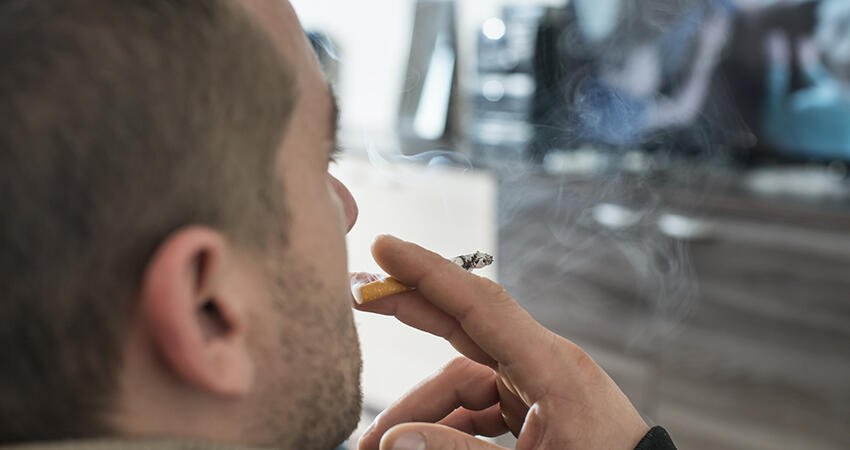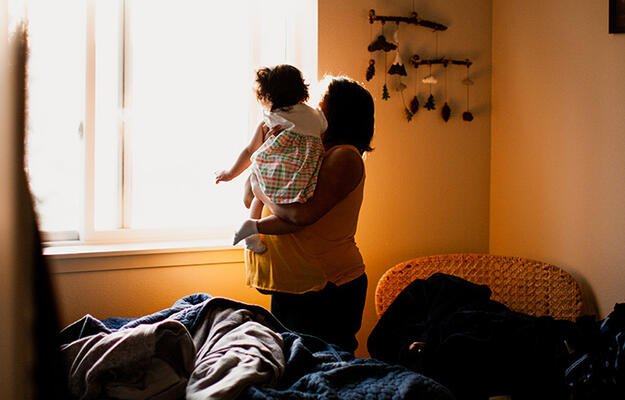
(Degimages/Shutterstock)
How to Mitigate the Risks of Thirdhand Smoke in Our Homes
You may not know the term “thirdhand smoke,” but chances are, you’ve caught a whiff of it. Thirdhand smoke (THS) is the residue of chemicals in the air and on surfaces that remains long after the cigarette smoke clears. THS includes nicotine and more than 100 chemicals, including carcinogens such as benzene, benzopyrene, cadmium, lead, and formaldehyde, which permeate clothing, carpets, upholstered furniture, and other porous surfaces and later reemit into the home through a process known as off-gassing.
Though the health effects of smoking and indirectly breathing in secondhand smoke are widely recognized, there is a growing body of evidence highlighting the health risks associated with THS. Studies find THS can have significant implications for public health and housing, especially for children, immunocompromised people, and even pets residing in or near areas where smoking has taken place.
Thirdhand chemicals circulate everywhere
There is no safe level of exposure to firsthand, secondhand, and thirdhand smoke. Various policies and regulations have been implemented to regulate exposure to cigarette byproducts in public places, but are they protective enough to keep nonsmokers healthy?
Studies suggest THS may be widely pervasive even in areas that have banned smoking. Yale researchers conducted a study in which they monitored the air quality of smoke-free theaters for THS brought in by moviegoers. They found moviegoers were exposed to THS at levels comparable to inhaling the smoke of 1 to 10 cigarettes within a single hour. Observable levels of THS persisted for days after patrons left the theater. The study noted that smaller, less ventilated settings, such as schools, cars, and homes, may face elevated and potentially more hazardous levels of THS than the large, well-ventilated theaters where the study took place. Other research has corroborated these findings, indicating that people exposed to tobacco smoke are significant carriers of THS, which can be detected in household dust and surfaces even after occupants have vacated their homes.
Thirdhand smoke has health and equity implications
The health effects of THS are still being studied. In animal models, researchers exposing mice to proportional doses of THS that are close to real-world pollution levels found significant damage to DNA, metabolism, and early life development, which can lead to cancer, obesity, and poor immune system function. Researchers also found when exposed to human cells, THS can break the structure of DNA, cause cellular damage, as well as mutations, significantly increasing chances of cancer.
Children may be particularly susceptible to these harmful effects because of their small body size, developing immune systems, and likelihood of touching and tasting their surroundings, making THS a greater health hazard for kids. A study of single-family smoking and nonsmoking home environments found ambient dust samples posed an elevated cancer risk for children ages 1–6 linked to THS exposure.
Beyond the outsize impact on people with vulnerable immune systems, thirdhand smoke likely also has an outsize impact on communities with larger concentrations of households of color and households with lower incomes. This results in heightened exposure to secondhand, and likely thirdhand smoke, which has real health consequences. When crafting policies to address THS, it’s vital to avoid unfairly burdening or penalizing owners and renters in these communities.
Removing thirdhand smoke from homes is difficult and costly
It is difficult to remove THS once a home environment has been exposed to smoke. Airing out rooms, opening windows, using fans and air conditioners, and restricting smoking to specific areas of a home cannot eliminate THS, and traditional household cleaning methods often prove ineffective. Cleaning THS from carpets, furniture, upholstery, mattresses, books, and personal belongings can be challenging or even impossible, exacerbating the compounding disparities of THS exposure, income, and associated health risks, which are amplified by the considerable expenses and complexities involved in THS remediation for fundamental structural elements like walls, floors, ceilings, doors, cabinets, and air ducts. Decades of lax smoking policies have resulted in significant THS reservoirs in many older buildings, typically inhabited by people and families with lower incomes.
For landlords, homeowners, and renters, this poses serious questions about habitability and resident safety. For residents in homes that were previously exposed to cigarette smoke, toxic chemicals could persist. For multiunit homes, restricting resident cigarette smoking to an outdoor setting may still have negative effects on residents who’ve never smoked. With the increasing awareness of THS, landlords and property owners may encounter legal challenges from tenants and buyers who are concerned about the health issues caused by secondary tobacco exposure (PDF).
How can we mitigate the risk of thirdhand smoke?
The risks of THS points to a growing need for both education and clear guidelines for mitigating exposure. The following recommendations can help various stakeholders make residential spaces safer.
- Residential homeowners: The extent and cost of remediation efforts for THS contamination can vary depending on the level of exposure. The American Nonsmokers’ Rights Foundation suggests a minimum cleaning regimen, which includes washing ceilings and walls with hot water and detergent; applying 2–3 coats of fresh paint; removing carpeting and padding followed by thorough cleaning before installing new flooring and replacing curtains, blinds, or window coverings; and cleaning ventilation ducts and replacing filters. For higher levels of THS contamination, additional and more expensive measures may be necessary.
- Landlords: Rented property owners may consider complete smoke-free policies, including outdoor areas, to help reduce the concentrations of toxic THS chemicals from their properties. Smoke-free policies may help buildings reduce the high costs of future cleaning and remediation and provide the most reliable approach to minimizing exposure to THS.
- Health departments: Local health departments can support limiting community THS exposure through home inspections, fines, and remediation. Effective housing policies aimed at addressing THS could incorporate mechanisms to inform tenants and prospective home buyers about the potential presence of THS chemicals in properties, either through voluntary disclosure or testing procedures, aligning with disclosure laws for other home toxins. Increasing education and awareness about THS risks within communities through comprehensive campaigns, integration of health education about THS in schools, and inclusion of THS-related topics in community health programming may help people make more-informed decisions regarding their housing choices.


